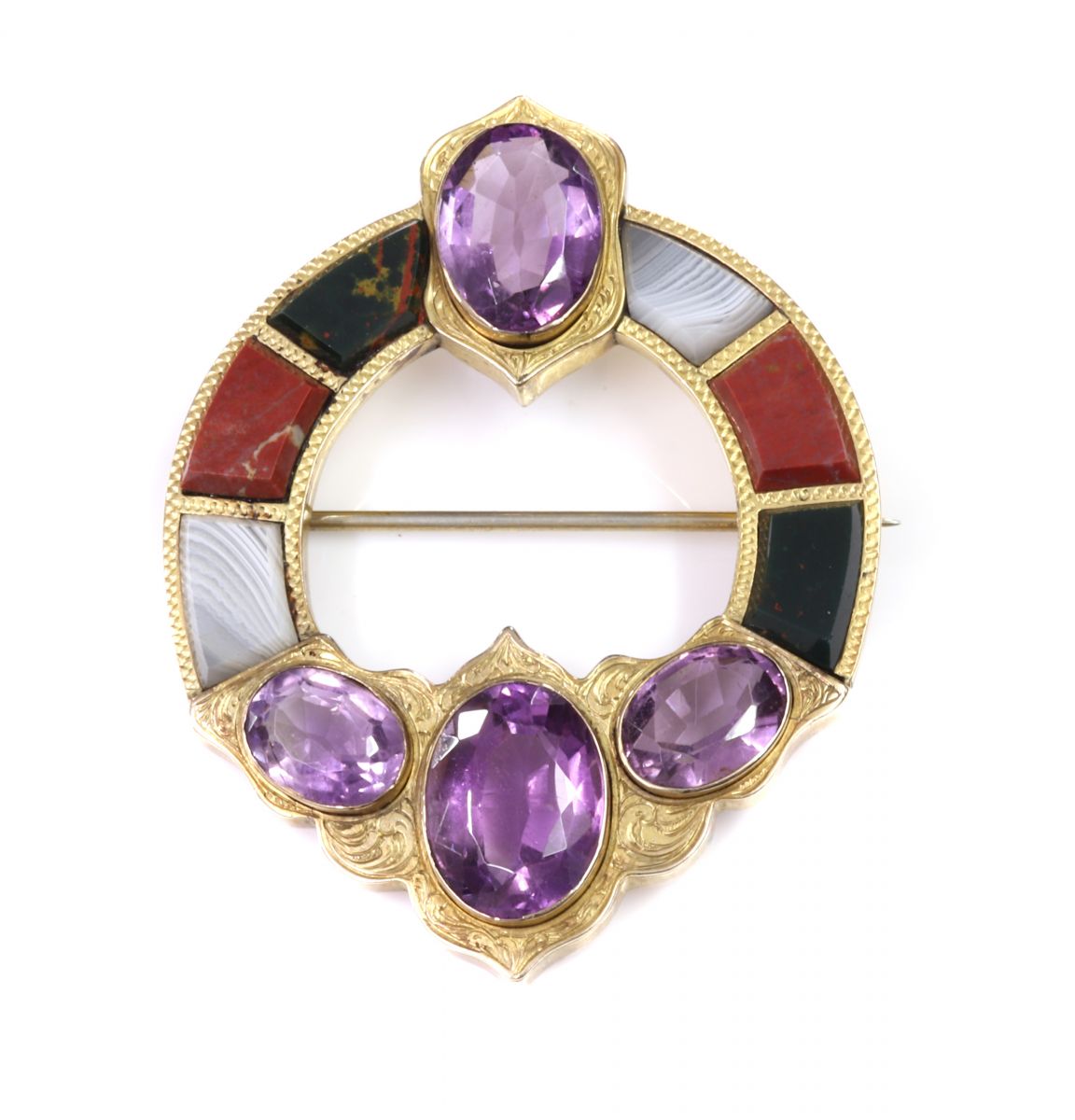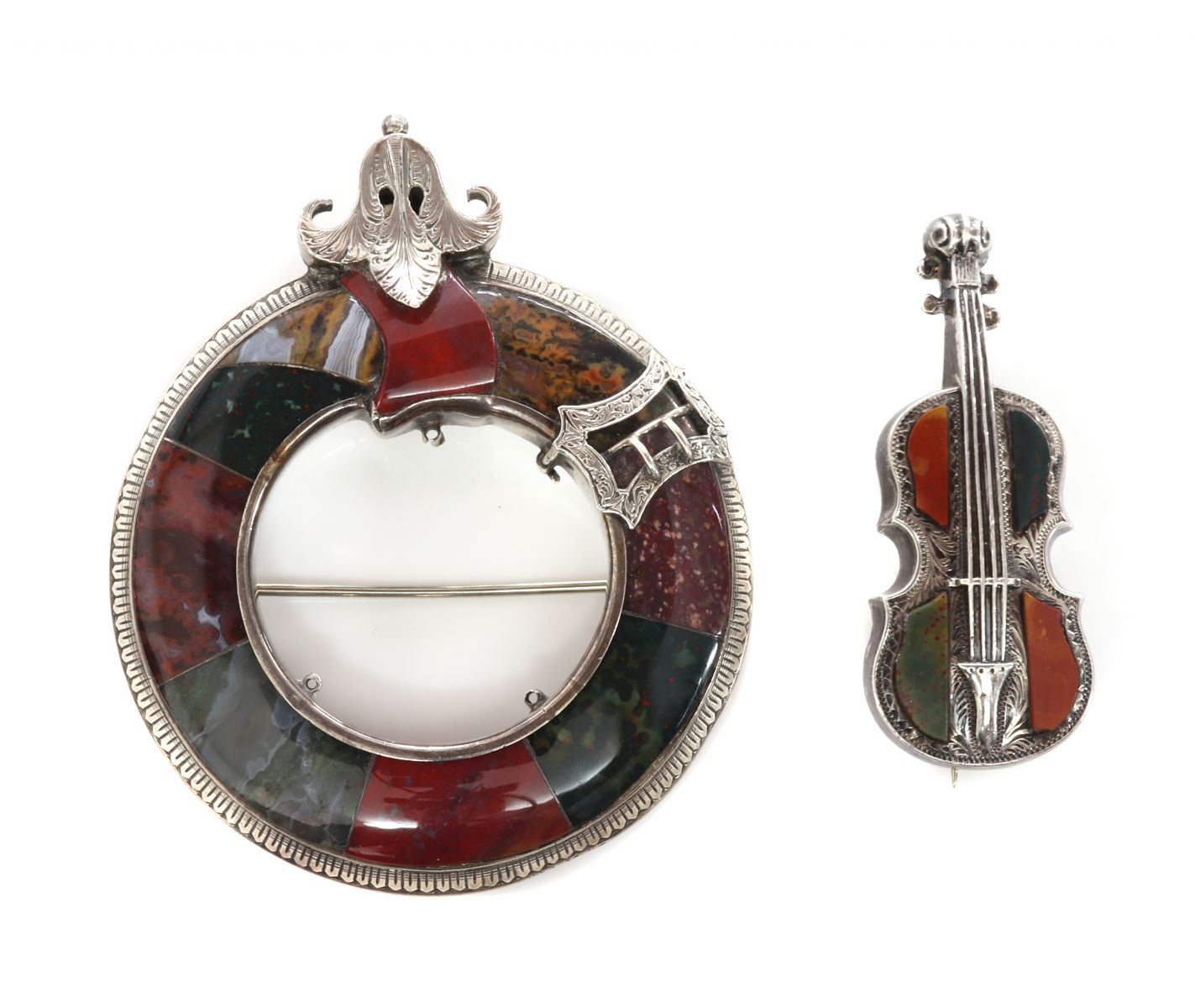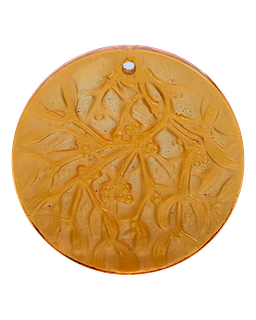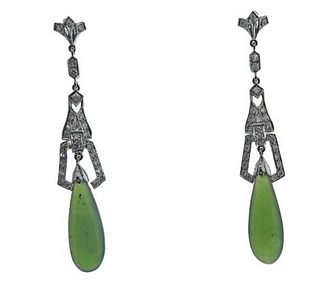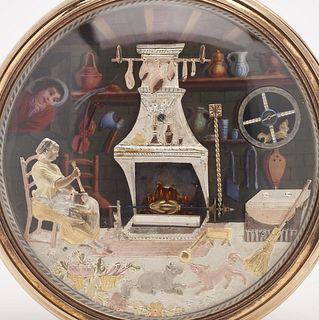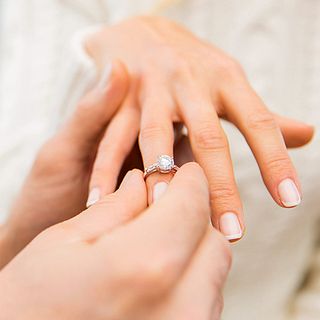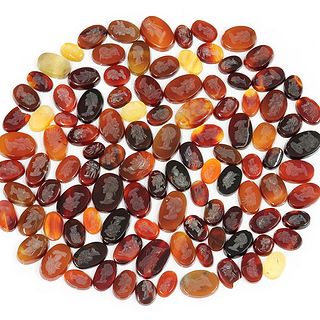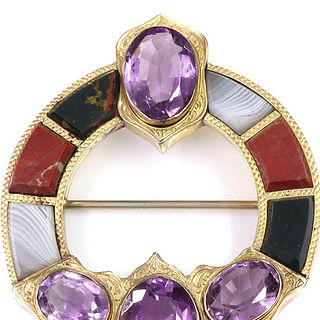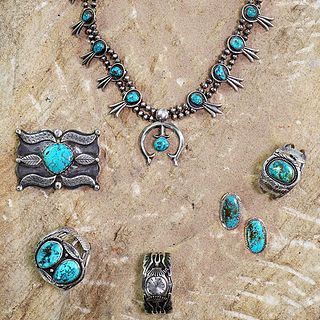Scottish Brooches | A Royal Souvenir
Traditional Scottish jewellery has captivated collectors for centuries, though recognition soared in the 19th century after it became a popular souvenir of Queen Victoria following her much loved trips to the Highlands.
In the autumn of 1842, two and a half years after her marriage to Prince Albert, Queen Victoria took her first trip north of the border. They were both completely enamoured by the landscape and returned many times, culminating in the purchase of Balmoral Castle in 1852 (leased from 1847).
Lot 80, A Scottish gold hardstone brooch - Sworders, Fine Jewellery and Watches - Live Online | November 30, 5am EST
The story goes that during one of their early visits, Prince Albert found some pebbles on the banks of the River Dee in Aberdeenshire and had them polished and set into jewellery for his Queen. The aristocracy was a major influence on fashion in the 19th century and Queen Victoria’s love of all things Scottish propelled this distinctive type of jewellery to public view, sparking a trend that would spread across Europe and last for decades.
So much was the hysteria for the style that Scottish jewellers were unable to keep up with demand and production had to be supplemented in England. By the mid-1800s, jewellers in other parts of Great Britain recognised the business opportunity and “Scottish” jewellery was soon being made in Birmingham and Exeter.
Typical examples from this period are characterised by native stones, specifically agates, amethyst, rock crystal, and granites, carefully arranged and inlaid in engraved settings of silver and gold, with intricate designs featuring Celtic knot motifs, flowers, leaves and other natural themes. Plaid brooches were particularly popular and one of the first designs to be snapped up by the masses due to being both beautiful and functional, securing heavy Victorian garments in place.
Lot 81, A Scottish silver hardstone garter style circle brooch - Sworders, Fine Jewellery and Watches - Live Online | November 30, 5am EST
Jewellery symbolism played an important part in Victorian life, and certain motifs were highly sought after, including designs featuring buckles, used to represent eternity, loyalty, strength and protection, as seen in lot 81 in Sworders auction of Fine Jewellery and Watches on Tuesday 30 November.
Scottish jewellery was at its height of popularity between 1845 – 1870 but remained fashionable until the turn of the century. Surviving pieces in good condition, such as those in our forthcoming sale, are just waiting to be discovered and treasured as Queen Victoria herself would have done.
___________________________________
Register to bid in Sworders, Fine Jewellery and Watches - Live Online sale November 30, 5am EST.
Don't have a Bidsquare account? Sign up here!
Be in the know about upcoming auctions and exciting post-sale results by following us on Facebook and Instagram.
- Quilts as a 2025 Design Trend: A Celebration of American Heritage and Craftsmanship
- A Celebration of Sports History and Collectibles
- The Thrill of Sports Memorabilia Auctions: A Collector’s Paradise
- Demystifying Coin Condition: A Guide to the Sheldon Grading Scale
- Snoopy & Friends: A “Peanuts” Auction at Revere
- Colorful Chinese Monochromes at Millea Bros
- 12 Holiday Gifts for the “Impossible to Buy For” on Bidsquare
- Alluring Art Objects and Accessories from the Estate of Chara Schreyer
- Kimball Sterling's One-Owner Outsider and Folk Art Collection Showcases Masters of the Unconventional
- The Moke Mokotoff Collection of Asian Art at Stair



 EUR
EUR CAD
CAD AUD
AUD GBP
GBP MXN
MXN HKD
HKD CNY
CNY MYR
MYR SEK
SEK SGD
SGD CHF
CHF THB
THB